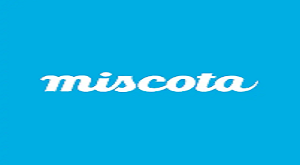Introduction
The global pharmaceutical company Eli Lilly and Company is well-known for developing cutting-edge medicines through research and development. Eli Lilly, which was established in 1876 and has its headquarters in Indianapolis, Indiana, has established itself as a market leader in the pharmaceutical sector with a strong dedication to advancing patient health through science and technology.
An Overview of the History and Origins of Eli Lilly Colonel Eli Lilly, a pharmaceutical chemist and Civil War veteran, founded Eli Lilly. The organization started with an emphasis on delivering great drugs and immediately acquired a standing for its obligation to greatness. Throughout the long term, Eli Lilly extended its innovative work abilities, prompting the presentation of a few pivotal meds.
Global Presence Eli Lilly has operations in more than 120 countries and offers a diverse product portfolio that covers a variety of therapeutic areas. Because of its global reach, the business is able to assist patients in a variety of markets and collaborate with organizations and healthcare professionals worldwide.
Founding and Historical Milestones
Founding Era
Eli Lilly and Company was founded by Colonel Eli Lilly, a pharmaceutical chemist and American Civil War veteran. With a vision to produce high-quality medications and a dedication to scientific excellence, Lilly established the company with a strong emphasis on innovation and integrity. The company quickly gained a reputation for its commitment to developing effective and reliable medicines.
Early Innovations
In the early 20th century, Eli Lilly introduced several groundbreaking products that set the foundation for its future successes. One of the company’s early achievements was the development of insulin in the 1920s, a revolutionary treatment for diabetes that transformed the management of the disease and established Lilly as a key player in diabetes care.
Mid-20th Century Growth
Throughout the mid-20th century, Eli Lilly continued to expand its portfolio and influence. The company introduced a range of new medications, including antibiotics and psychiatric drugs, and expanded its operations globally. The introduction of Prozac (fluoxetine) in the late 1980s marked a significant milestone, as it became one of the most widely prescribed antidepressants and solidified Lilly’s position in the field of neuroscience.
Priorities and Focuses
1. Innovative work (Research and development
Eli Lilly is known for its vigorous Research and development endeavors, zeroing in on finding and growing new treatments for conditions with neglected clinical requirements. The organization puts vigorously in research, using cutting edge innovations and imaginative ways to deal with foster new meds and medicines.
2. Therapeutic Areas The portfolio of Eli Lilly includes the following therapeutic areas
- Oncology: Lilly is dedicated to advancing cancer care through the development of targeted therapies and immunotherapies. Notable products include Verzenio (abemaciclib), a treatment for hormone receptor-positive breast cancer, and a range of other oncology drugs aimed at improving survival rates and quality of life for cancer patients.
- Diabetes: With a long history of innovation in diabetes care, Eli Lilly continues to lead in the development of insulin and other diabetes management solutions. Key products include Humalog, an insulin analog for rapid glucose control, and Trulicity, a once-weekly injectable for type 2 diabetes.
- Neuroscience: Eli Lilly focuses on treating neurological and psychiatric disorders, including depression, schizophrenia, and Alzheimer’s disease. The company’s research in this area aims to provide new and effective treatments for mental health conditions and cognitive disorders.
- Immunology: Lilly is engaged in developing therapies for autoimmune diseases and inflammatory conditions. Its portfolio includes medications for rheumatoid arthritis, lupus, and other immune-related disorders.
- Cardiovascular: Eli Lilly’s cardiovascular portfolio includes treatments for heart failure, hypertension, and other heart-related conditions. The company’s research aims to address the complex challenges of cardiovascular health and improve patient outcomes.
3. Pipeline and Advancements
Eli Lilly’s pipeline remembers a scope of new and arising treatments for different progressive phases. The company is committed to innovation and is developing cutting-edge medical solutions and technologies.
Important Products 1. Insulin For the management of diabetes, Eli Lilly has long developed insulin products, including insulin analogs like Humalog and Trulicity. Diabetes patients’ quality of life has greatly improved as a result of these products.
2. One of Eli Lilly’s most well-known products is Prozac (fluoxetine). It was a spearheading specific serotonin reuptake inhibitor (SSRI) used to treat melancholy and other emotional well-being problems. Prozac’s presentation denoted a significant headway in the treatment of misery.
3. Cialis Erectile dysfunction and benign prostatic hyperplasia are treated with the drug Cialis (tadalafil). It is well-known for its extended half-life in comparison to other medications of the same class.
4. Verzenio Verzenio (abemaciclib) is a novel treatment for breast cancer, especially in cases where the HER2 receptor is negative and the hormone receptor is positive. It addresses Eli Lilly’s continuous obligation to propelling malignant growth careCorporate Social Responsibility Patient Access and Moderateness
Eli Lilly is committed to working on quiet admittance to its prescriptions. Patient assistance programs and partnerships with healthcare providers are among the company’s initiatives and programs that are intended to assist patients who may have difficulty affording their prescriptions.
2. Natural Manageability
Eli Lilly is focused on manageability and ecological stewardship. The company has taken a number of steps to lessen its impact on the environment, such as reducing waste, reducing greenhouse gas emissions, and conserving resources.
3. Local area Commitment
Eli Lilly draws in with networks through different humanitarian exercises, supporting wellbeing and health projects, schooling, and examination drives. Through its involvement in the community, the business aims to improve society.
Recent Changes and Plans for the Future Eli Lilly continues to concentrate on improving its research capabilities and expanding its product range. Ongoing improvements include:
Oncology Innovations: Proceeded with innovative work in oncology, including new treatments and mixes to treat various sorts of malignant growth.
Development of New Markets: efforts to improve global access to its products and expand into emerging markets.
Partnerships and Collaborations: Key joint efforts with different organizations and exploration establishments to drive advancement and speed up the improvement of new treatments.
Notable Products and Achievements
1. Insulin
Eli Lilly has a storied history in diabetes care, with the development of insulin being a landmark achievement. The company’s insulin products, including Humalog and Trulicity, have transformed the management of diabetes, providing patients with more effective and convenient treatment options.
2. Prozac
Prozac (fluoxetine) revolutionized the treatment of depression and other mental health conditions. As one of the first selective serotonin reuptake inhibitors (SSRIs), Prozac offered a new approach to managing depression, leading to significant advancements in psychiatric care.
3. Cialis
Cialis (tadalafil) is a widely recognized medication for erectile dysfunction and benign prostatic hyperplasia. Known for its long duration of action, Cialis has become a popular choice for men seeking effective treatment for these conditions.
4. Verzenio
Verzenio (abemaciclib) represents Eli Lilly’s innovative approach to cancer treatment. As a CDK4/6 inhibitor, Verzenio targets specific pathways involved in cancer cell growth, offering a valuable option for patients with hormone receptor-positive breast cancer.
Corporate Responsibility and Sustainability
1. Patient Access and Affordability
Eli Lilly is dedicated to improving patient access to its medications. The company has implemented various programs and initiatives to assist patients who face challenges in affording their prescriptions. This includes patient assistance programs, collaborations with healthcare providers, and advocacy for policies that enhance access to essential medications.
Expansion into Emerging Markets
Strategic moves have been taken by Eli Lilly and Company, a global leader in the pharmaceutical industry, to increase its presence in emerging markets. This extension is essential for the organization’s more extensive technique to improve its worldwide reach and address the developing medical services needs in quickly creating areas. Lilly’s commitment to expanding access to cutting-edge treatments and enhancing healthcare systems worldwide is reflected in its focus on emerging markets.
Justification for Expansion
1. Developing Medical care Needs
Developing business sectors are encountering huge changes in their medical care scenes. With rising populaces, expanding frequency of persistent sicknesses, and developing interest for cutting edge clinical therapies, these locales present significant open doors for drug organizations. The need to address these ever-evolving challenges in healthcare and provide access to essential medicines drives Eli Lilly’s expansion strategy.
2. Potential for the Market Emerging markets are anticipated to experience significant economic expansion in the coming decades and account for a significant portion of the global population. In these areas, a growing middle class is increasingly able to pay for cutting-edge medical care and medications. The goal of Eli Lilly’s investment in these markets is to take advantage of the potential for growth and establish a solid foothold in economies that are rapidly developing.
3. Upper hand
Venturing into developing business sectors permits Eli Lilly to differentiate its worldwide income streams and lessen reliance on laid out business sectors. Lilly can use its capabilities in research and development to introduce novel treatments and increase brand recognition by establishing a presence in these areas. The company is also able to stay ahead of its rivals in a rapidly changing global pharmaceutical landscape thanks to this strategic move.
Notable Achievements and Initiatives
1. Expansion in Asia
Lilly has made significant strides in Asian markets, including China and India. The company has established research and development centers, manufacturing facilities, and distribution networks in these countries. Lilly’s presence in Asia allows it to contribute to the growing demand for innovative healthcare solutions and collaborate with local healthcare providers and researchers.
2. Entry into Africa
In Africa, Eli Lilly has focused on addressing public health challenges such as infectious diseases and chronic conditions. The company has engaged in partnerships with local governments and organizations to improve access to medicines and support healthcare infrastructure development. Lilly’s efforts in Africa aim to contribute to the continent’s health and development goals.
3. Engagement with Local Communities
Eli Lilly’s expansion into emerging markets includes initiatives to engage with local communities and support healthcare education. The company participates in public health campaigns, provides training for healthcare professionals, and supports community health programs. These efforts help build trust and strengthen Lilly’s reputation as a responsible and engaged corporate citizen.




